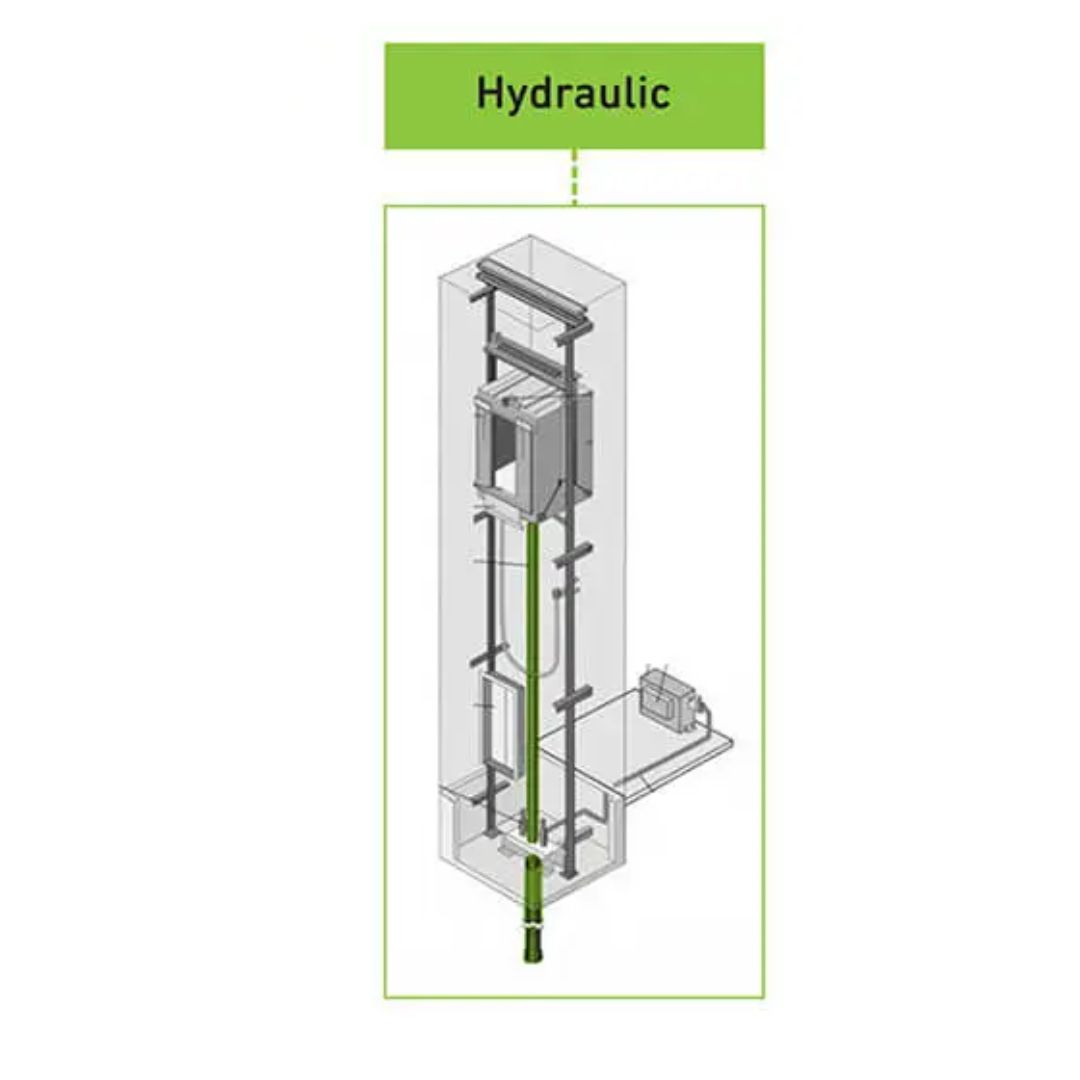Hydraulic Lift
Hydraulic lifts, commonly found in various buildings and industrial settings, use hydraulic mechanisms to raise and lower the lift cab.
Introduction Hydraulic lifts, commonly found in various buildings and industrial settings, use hydraulic mechanisms to raise and lower the lift cab. These lifts are known for their reliability, smooth operation, and cost-effectiveness, making them a popular choice for low to mid-rise buildings.
How Hydraulic Lifts Work Hydraulic lifts operate using a pump that moves oil into a cylinder, pushing a piston up to lift the cab. When the cab needs to descend, a valve releases the oil, and the weight of the cab pushes the piston down. The key components include:
- Hydraulic Pump: Moves the hydraulic fluid into the cylinder.
- Cylinder and Piston: The piston moves inside the cylinder, lifting and lowering the cab.
- Control System: Manages the pump and valves to control the lift’s movement.
- Tank: Stores the hydraulic fluid when not in use.
Types of Hydraulic Lifts
- Conventional Hydraulic Lifts: Use a hoistway and a pit at the bottom to accommodate the piston when the cab is at its lowest point.
- Hole-less Hydraulic Lifts: Do not require a deep pit, making them suitable for buildings with basement floors or limited space.
- Roped Hydraulic Lifts: Use a combination of ropes and a hydraulic mechanism, allowing for higher travel distances compared to conventional hydraulic lifts.
Advantages of Hydraulic Lifts
- Smooth and Quiet Operation: Ideal for environments where noise reduction is important.
- Cost-Effective Installation and Maintenance: Generally cheaper to install and maintain compared to traction lifts.
- High Load Capacity: Suitable for transporting heavy loads, making them ideal for freight or hospital lifts.
- Safety: Hydraulic systems naturally slow down as they reach the top or bottom of the shaft, reducing the risk of abrupt stops.
Applications
- Residential Buildings: Ideal for low-rise apartments and homes.
- Commercial Buildings: Used in office buildings, shopping malls, and hotels.
- Industrial Settings: Commonly used in warehouses and factories for transporting goods.
- Hospitals: Often employed for patient and bed lifts due to their smooth operation and spacious design.
Safety Features
- Emergency Lowering System: Allows the cab to descend safely in case of a power failure.
- Overload Protection: Prevents the lift from operating if the load exceeds the maximum capacity.
- Rupture Valve: Stops the lift from descending uncontrollably in case of a hydraulic line failure.
- Manual Lowering Valve: Enables the lift to be lowered manually in emergencies.
Maintenance and Inspection Regular maintenance is crucial for the safe and efficient operation of hydraulic lifts. Key maintenance activities include:
- Checking Hydraulic Fluid Levels: Ensuring there is enough fluid and that it is clean.
- Inspecting Cylinders and Pistons: Looking for signs of wear or leaks.
- Testing Safety Systems: Verifying that emergency and safety features are fully operational.
- Routine Cleaning: Keeping the hydraulic pump and tank free of debris.
Conclusion Hydraulic lifts are a versatile and reliable option for many buildings and industrial applications. Their smooth and quiet operation, combined with their ability to handle heavy loads, makes them an excellent choice for low to mid-rise structures. Regular maintenance and inspections are essential to ensure their continued safety and efficiency.
